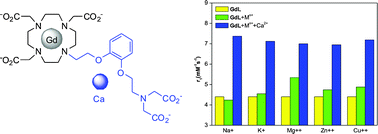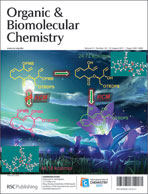Structure-related variable responses of calcium sensitive MRI probes
Abstract
A new series of Gd3+ complexes based on DO3A (GdL1–GdL4) was synthesized and investigated. They possess side chains with different structures which determine their varying binding properties and response towards endogenous metal ions, measured by changes in the longitudinal relaxivity (r1). GdL4 exhibits the highest selectivity toward Ca2+ in comparison to the other complexes, with up to a 63% increase of the r1. GdL2 and GdL3 also respond to different Ca2+ concentration ranges, however with a lower selectivity since the r1 changes are also observed in the presence of other


 Please wait while we load your content...
Please wait while we load your content...